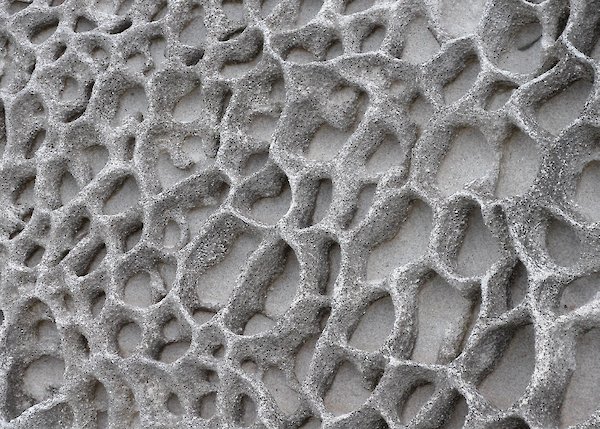Speakers
Diana Balmori
FASLA the founding principal of Balmori Associates, is recognized internationally for her creative interplay between landscape and architecture. She established Balmori Associates in 1990. In 2006, she created balmoriLABS within the firm to undertake and join the search for form in landscape and the intersection with architecture, art or engineering: Green Roofs, Floating Islands, Temporary Landscapes, Forms of Representation, and Zero Waste City are some of the labs. Diana Balmori has been featured in publications and programs including Dwell, The Architects Newspaper, Monocle, El Pais, PBS, WNYC, Design Observer, Inhabitat, and Utne Reader, which named her 1 of 50 „Visionaries Who Are Changing Your World“ in 2009. In addition to teaching at Yale University in both the School of Architecture and the School of Forestry and Environmental studies, she has lectured and published extensively. Her most recent book is Groundwork: Between Landscape and Architecture, written with Joel Sanders (Random House, September 2011). A Landscape Manifesto was published by Yale University Press (2010). She is the co-author of many books, such as Saarinen Garden: A Total Work of Art; Redesigning the American Lawn: A Search for Environmental Harmony; Transitory Gardens, Uprooted Lives; The Land and Natural Development (LAND) Code: Guidelines for Environmentally Sustainable Land Development; Beatrix Farrand, American Landscapes; Garden and Campus Designs.
Read more: Diana BalmoriDorothée Imbert
Chairs the Master of Landscape Architecture Program and is a Professor at Washington University in St. Louis. She was trained as an architect and a landscape architect in Paris and at the University of California at Berkeley. She practiced landscape architecture at Peter Walker and Partners from 1996 until 1999 and subsequently taught at Harvard University for ten years before joining the faculty at Washington University. Imbert has carried out extensive research on landscape modernism with an emphasis on Europe and California, leading to the books The Modernist Garden in France (Yale, 1993), Garrett Eckbo: Modern Landscapes for Living, co-authored with Marc Treib (California, 1996, 2005), and Between Garden and City: Landscape Modernism and Jean Canneel-Claes (Pittsburgh, 2009). She is currently editing a volume on Food and the City for Dumbarton Oaks, where she organized a symposium on productive landscapes and the urban context in May 2012. Her recent design and research interests have centered on the intersection of urban interventions and the definition of productive landscapes. The project “Parking Plot,” carried out with Paula Meijerink and the students of Washington University, was included in the US pavilion’s exhibition Spontaneous Interventions: Design Actions for the Common Good at the 2012 Venice Architecture Biennale
Read more: Dorothée ImbertUlrike Krippner
was trained as a landscape architect and worked in landscape architecture studios in the field of parks, gardens and historic sites. Besides, she joined the Institute of Landscape Architecture at the BOKU Universität für Bodenkultur Vienna in 2001. Since 2006, her research focuses on the maturation of landscape architecture in Austria from the 1900s to the 1970s, by looking at individuals as well as studying structure and development of the profession, or examining designed landscapes like the WIG Wiener Internationale Gartenschau 1964 and 1974. In 2010, Ulrike Krippner was granted a summer fellowship in Dumbarton Oaks, Washington D.C., where she followed her research on exiled Austrian garden architects. Recently, she has published several articles, papers, and presentations on women in Austrian horticulture and garden architecture. These publications will be part of her doctoral thesis on Viennese Jewish women garden architects.
Read more: Ulrike KrippnerAnja Seliger
has received the degree Diplomingenieurin in Horticultural Sciences and Landscape Architecture from Humboldt Universität zu Berlin and Technische Universität Dresden. She has gained practical experience in the field of production, use of plants and horticultural management in Berlin, Hagen and Dresden, Germany and in the field of preservation of historical gardens in Zurich, Switzerland. Since 2009 Seliger is a scientific staff member at the Institute of Landscape Architecture at BOKU, University of Natural Resources and Life Sciences in Vienna, Austria. Besides pursuing her own doctoral research of Austrian landscape architecture in the 20th century, she has published two articles about the historical use of perennials in Austria in Die Gartenkunst. In addition she teaches master courses in landscape history.
Read more: Anja SeligerMichael van Gessel
was educated as a landscape architect at the University of Wageningen (1978), he is active in the broader field of landscape architecture and urbanism. Since 1997 he has worked as an independent advisor. Prior to this he was employed for eighteen years at Bureau B+B (urbanism and landscape architecture), the last seven as its director. He devotes half his time to the supervision of large scale projects such as: the development of the Belvédère in Maastricht; the development of the former harbour area in Amsterdam, IJ-oevers; the renovation of the Vondel Park in Amsterdam; and the renovation and expansion of Artis, the Amsterdam Zoo. Landscape architectural projects take up the rest of his time. These projects amongst others include working on new parks (Stadspark and Waterpark Osdorp in Amsterdam, the Museum Park at the Oranjewoud estate in Heerenveen, and Kromhoutpark in Tilburg) and the renovation of old city parks and estates (Rijsterborgherpark in Deventer, Valkenbergpark in Breda, Oranjepark in Vlaardingen, Twickel in Delden, and De Haar Castle in Haarzuilens).
Read more: Michael van GesselGeorges Descombes
holds degrees from the University of Geneva and the Architectural Association of London. He has taught in Europe and the USA, notably at Harvard and Berkeley, as well as the University of Geneva. Renowned for his interventions in the landscape, he very often associates contemporary artists to his work. He regularly collaborates with Carmen Perrin and has realised projects with Briton Richard Long and New-Yorker Max Neuhaus. His current works include the project “Lyon Confluence” and the renaturation of the Aire Canal in Geneva. Between landscaping and contemporary art, the work of Swiss architect Georges Descombes remains quite confidential. Very renowned in the landscaping world, especially in the USA and the Netherlands, he however stands apart from the current architecture scene.
Read more: Georges Descombes